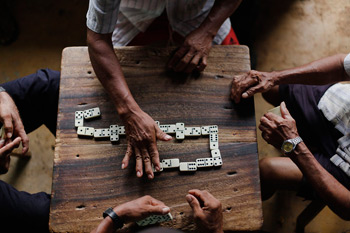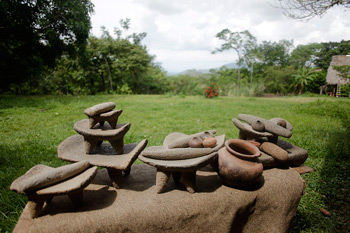On November 20th, a commission consisting of various government agencies was created to find funding to compensate those who have properties that are in the indigenous areas of the country.
Currently, the country has eight indigenous tribes, spread across 22 territories or reserves, one of which is the Matambú Indigenous Reservation, located in Hojancha Canton and part of Nicoya.
The committee includes representatives of the Ministries of Culture, Education, Government and Presidency as well as the National Directorate for Community Development (DINADECO – Dirección Nacional de Desarrollo Comunal) and the Agrarian Development Institute (IDA – Instituto de Desarrollo Agrario).
Meanwhile, the National Commission for Indigenous Affairs (CONAI - Comisión Nacional de Asuntos Indígenas) will be the link between the government and aboriginal inhabitants, according to Victor Hernandez, executive director of CONAI.
Hernandez explained that monies will only be given to those who obtained properties before the year 1977, when the Indigenous Law No. 6172 (Ley Indígena) became effective, as provided in Article 5. |
|

Elders of Matambú play dominos every afternoon. Photo Pinar Istek |
| |
|
| |

The Chorotegas used metates, to mill the grains. Photo Pinar Istek |
Hernandez determined that there are three types of owners: 1) land holders who acted in good faith, whose land was registered before the Indigenous Law; 2) those who didn't act in good faith, who acquired property after the enactment of the Law, and therefore the sale is void and an eviction is ordered without compensation; and 3) the properties of the Rural Development Institute (INDER - Instituto de Desarrollo Rural), i.e. in state hands.
Jose Vibian Aguirre has lived in Matambú for 52 years. He is one of the few direct descendants of indigenous Chorotegas remaining in the reserve. He is currently the president of the Matambú Development Association and principal of the community school.
He recalled that in 2008 the Land Registry Regulation Program implemented by the National Register detected 19 farms in the hands of "white men" that are within the boundaries of the indigenous reservation and were registered before 1977; for that reason they have to be relocated and compensated.
Naun Masis, former member of the Development Association, explained that the Land Registry Regulation Draft defined the total area of the Matambú reserve as 1622 hectares. For now the commission will draw up a strategic plan to attract the required funds and give them to those who have a property in accordance with the requirements of the law within the Indigenous communities.
 |
| |
More Regional News
Increase in Crime with Return of Tourists
During the first 15 days of November, the beginning of tourist season, the tourist police reported an increase in the number of crimes against property. At the same time, Jeison Vargas, tourist police chief in Guiones, assured that this is what the tourist police are here for and that they are visiting the area businesses every day.
Costa Rica Scores More or Less On Corruption Index
Costa Rica ranks 48th in Transparency International’s 2012 Corruption Perceptions Index (CPI) which measures perceived public sector corruption in 176 countries. Costa Rica’s score in the 2012 survey is 54 on a scale of 0 (perceived to be highly corrupt) to 100 (perceived to be very clean).
Thieves Steal Boat Engine in Garza
On the morning of Monday, November 19th, Juan Rafael Hernandez Salguera (known as Juan Mora) of Garza received a phone call that his boat was missing. The anchor had been cut.
Archeologists Didn’t Find Indian Remains in Front of Colonial Church
Nicoyans have expressed divided opinions over the construction of a new plaza in front of the Colonial Church. One of the concerns manifested by some is about the existence of indigenous remains en the area where they are moving earth.
Water May Cause Illnesses in Nosara Schoolchildren
On November16th, Serapio López School filed a complaint with the Ministry of Health after several children had health problems, apparently caused by water consumption in their facilities.
|
 |
|
|

